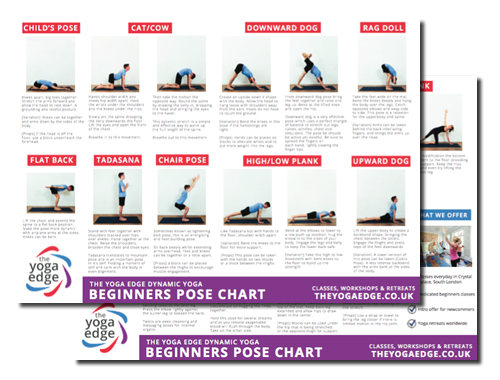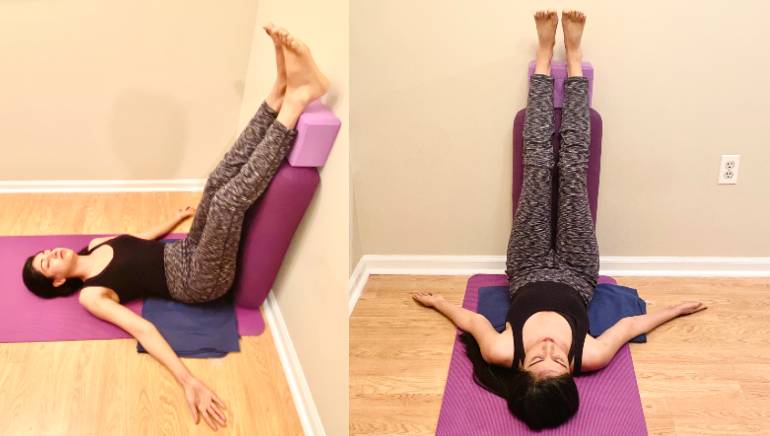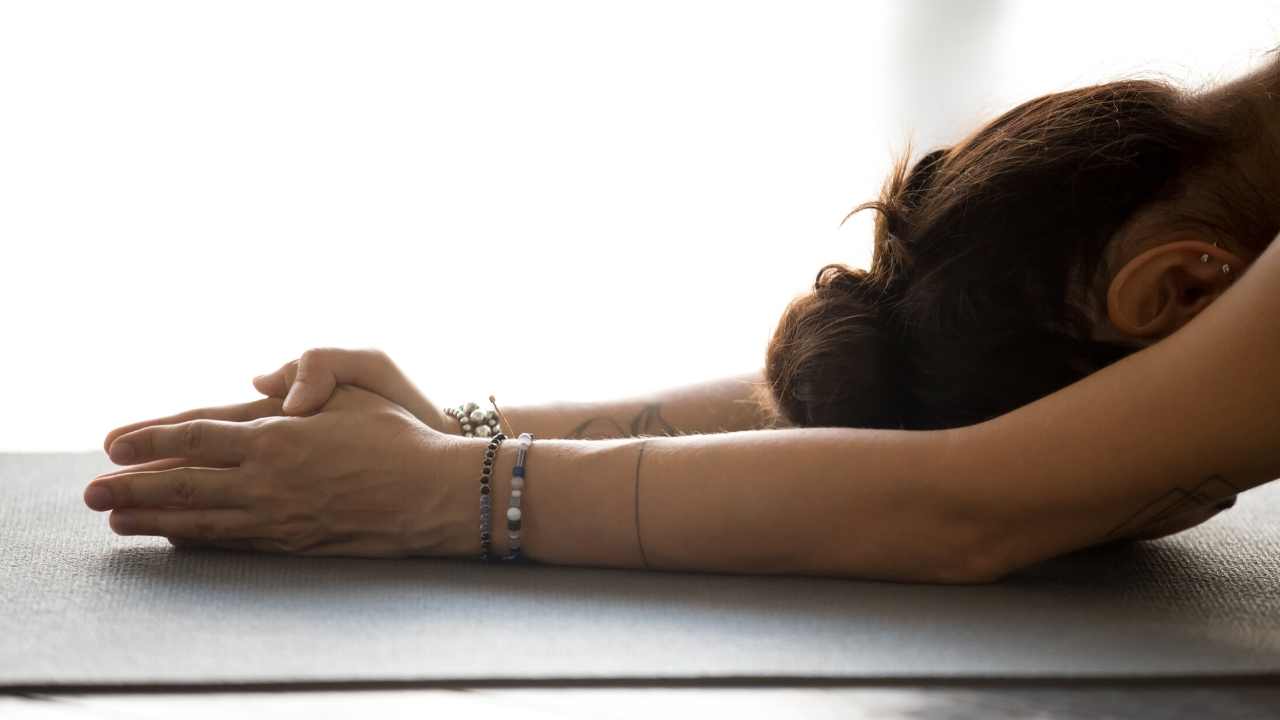
Running poses are a great addition to yoga. They can strengthen and stretch leg muscles and prevent injury. To see results, runners should practice these poses at the very least once a week. Here are some variations. Find the one that suits you best. This article will explain the basics of yoga. Here are some tips to help you get started. The best way to start is to find a teacher who specializes in yoga for athletes.
Runners often have tight muscles and tend to push themselves into advanced poses. They should avoid over-stressing their muscles by performing simple forward rolls. Simple hamstring stretching is a good way to address the unique needs of your body. No matter what your level or age, you will find the right pose for you. Poses can also be performed with props. To start, try some of these poses. These will help to release tension in your hamstrings.

If you enjoy running, try yoga for runners. The stretching will improve your posture. It will also improve your focus. It will help you focus, tune out your thoughts, and keep you calm in stressful situations. Yoga can help you feel more confident in your own race. This will enable you to perform at the highest level. Practicing yoga will also improve your ability to concentrate. Yoga can improve your flexibility, strength, and performance. Do the following stretches to make the most of your workout.
Runners yoga can improve flexibility and recovery from long runs. The sequences were specifically designed to increase flexibility in the lower half of runners. It maintains the health of your joints and muscles, and can help you attain a more balanced posture. It is a full-body awareness exercise that focuses on the quads and hip flexors. It's a good idea to start with free, excellent yoga for beginners.
Runners yoga may improve flexibility and lengthen the hips. It can also prevent injury. It can also be used as a post-run routine. It can help speed up recovery time and ease sore muscles. Yoga for runners has many benefits. It can prevent injuries and improve your stamina. It can be used in conjunction with your regular workouts. It will improve your energy levels and keep your body running better.

The runner pose is essential for improving flexibility. The exercises will improve your range of motion, strengthen your muscles, and promote post-run recovery. Runners should focus on hatha yoga, which is the most basic form. It will focus on breathing and movement and not stretch your body too much. A beginner class is the best option for you. It's not as difficult as you think.
FAQ
Why Metabolic Well-being is the Key to Aging Well
People live longer lives than ever before. They are also becoming more sick as a result. And while we've made great strides in medical science, it's becoming increasingly clear that our current approach isn't working.
We need to change how we think about health and aging. To achieve healthy aging, we must look at metabolic health as more than just weight loss. It is also important to consider overall wellness.
To live a full and active life, your metabolism should be healthy all your life.
The good news is that there are many ways to improve your metabolic health. One way to improve your metabolic health is to incorporate these seven foods into your daily diet.
-
Resveratrol has been proven to increase cellular longevity. They also contain antioxidants and vitamins C & E.
-
Pinto beans and lentils are great sources of fiber and plant-based proteins. These nutrients help maintain blood sugar levels so they don’t spike and fall.
-
Broccoli contains sulforaphane, shown in studies to protect cells against DNA damage. It may even be able to slow down cancer progression.
-
Chia Seeds are high-in omega-3 fatty acids, fiber, and other nutrients. They are rich in protein and antioxidants. All of these nutrients help promote heart health, brain function, and gut health.
-
Green Tea is rich in polyphenols known as catechins. Studies have shown that green tea contains catechins which are linked to lower bone fractures and cardiovascular disease. They also reduce cognitive decline and diabetes risk.
-
Salmonis high in protein and rich in vitamin D is one of the most popular sources of lean proteins.
-
Walnuts are rich sources of omega-3s and antioxidants, such as alpha lipoic (ALA). ALA protects against inflammation and boosts energy production.
What does butter do?
Butter is one source of saturated fats. This type of fat helps to build stronger bones, healthy skin, and hair.
Butter also contains vitamin K, which prevents bleeding from cuts and bruises. Vitamin K is combined with vitamin C to prevent bruises.
Butter is also rich with minerals, such as calcium and phosphorous. These elements encourage stronger bones.
However, butter has some drawbacks. Butter is high in cholesterol. A few studies have shown that too much cholesterol can increase the risk of developing coronary disease.
Butter is also high-fat, which can contribute to obesity and increase cholesterol.
Butter can be spread on bread, but you don't have to dip it into soups or salads if you absolutely must. Bread absorbs less oil than pasta and potatoes.
What's the best workout for men over 40?
The best workout for older men usually increases energy and stamina.
It is important that you note that people over 40 experience a decrease in testosterone levels, which results in lower sex drive.
This does not mean that you should stop engaging in physical activity. Many studies show that regular aerobic exercise can boost testosterone in some men.
You can improve your sexual performance by starting an aerobics program.
How many times a week should I exercise?
It all depends on your time and the type of exercise that you enjoy. An average guideline is to do moderate-intensity aerobic activity 3 to 5 days per semaine. It is important not to overdo it. To get the best results from your exercise, it is important to be consistent.
Which exercises are most effective for me?
It really depends on what kind of fitness goals you have. Some people focus on endurance activities like running, cycling, and swimming. Others like lifting weights or using resistance band. There are many options for exercise today. You can choose the one that best suits you.
Does weightlifting burn more fat than other forms of exercise?
You can lose more fat by weight lifting, but only when you do it in conjunction with cardio.
Cardio workouts are a great way to increase the weightlifting benefits.
Weightlifting, when done properly, increases your heart rate.
If you don't mix it with cardio, your body won't notice significant changes.
Do I need to exercise every day?
No! At least 30 minutes moderate-intensity exercise five days per week is a good goal. It means you need to exercise hard enough or walk fast enough that you are slightly out-of- breath.
Statistics
- An estimated calorie range for moderately active adult males falls between 2,200 to 2,800 calories per day, depending on age. (eatright.org)
- According to the American Heart Association, blood pressure should be checked at least once every two years, beginning at age 20. (my.clevelandclinic.org)
- Candidates and applicants must pass all four tests at 70% (minimum level) to graduate from Basic Deputy U.S. Marshal (BDUSM) Training. (usmarshals.gov)
- 10 pounds in a month is likely during a lean bulking phase, especially for beginners. (muscleandstrength.com)
- By John Thompson Take a whopping 38% off a set of PowerBlock Pros. (menshealth.com)
External Links
How To
How can I exercise to burn fat?
Exercise burns calories through increased metabolism and oxygen consumption.
If you exercise with moderate intensity, you can safely lose weight.
These are some tips to help you lose fat while working out:
-
Cardio exercises include walking, running, swimming, cycling, running and jogging.
-
For 30 minutes, do it three times a week.
-
You can add strength training into your exercise routine if you're looking to lose even more weight.
-
Avoid intense training. It is possible to build muscle without destroying muscle tissue.
-
During exercise, drink plenty of water. Water is essential for flushing out toxins and keeping your body hydrated.
-
After working out, make sure to drink low-fat proteins shakes. Protein shakes repair muscles and increase energy.
-
Eat smaller meals throughout the day, so you don't feel hungry between meals.
-
Don't skip breakfast! Skipping breakfast can make you tired and sluggish.
-
Mental health is important. Stressful situations can slow metabolism.
-
Keep a positive attitude. Studies have shown that people who are convinced they are overweight gain more weight than those who feel they look attractive.
-
Sleep enough. A lack of sleep makes it difficult to lose fat.
-
Active living is key. Be sure to get up and move around every hour or two.
-
Maintain a healthy diet. You will feel fuller longer if you eat right.
-
Find ways to relax. Your body won't release stress hormones that cause muscle tissue destruction if you have a tense mind.
A balanced diet contains all necessary nutrients for growth and development.
You should eat six small meals per day rather than three large ones. This gives your body more time to digest the food you eat.
For strong bones to be maintained, you need approximately 500mg of calcium per day. Calcium can also be found in milk products, yogurt, fortified Soy beverages, orange Juice, cereals and bread.
Calcium is found in green leafy vegetables, beans, tofu, seeds, nuts, and cheese.
Your body needs vitamin D to absorb calcium. Vitamin D can also be found in some fortified foods such as eggs, fish, and yolk.
Vitamin E plays an important role in skin health. Vitamin E is found in vegetable oils and wheat germ oil, as well as peanuts, almonds and sunflower seeds.
Your body needs zinc to maintain normal immune function and heal wounds. Zinc is found in oysters, legumes, meats, whole grains, and seafood.
Zinc deficiency could cause fatigue, nausea, vomiting, and depression.
Insulin resistance is caused by eating too much sugar, which can increase blood glucose levels. Insulin resistance is linked to weight gain.
When there is a high level of free radicals, insulin resistance can develop. Free radicals can be molecules with unpaired electrons that cause damage to cell membranes.
Most free radicals come from pesticides herbicides, food additives, preservatives smoking, radiation, chemical in cosmetics, lotions and household cleaning supplies.
Free radical damage can lead to cancer, heart disease, diabetes, arthritis, asthma, and aging.
Eating a well-balanced diet with antioxidants is the best way to prevent free radical damage. Antioxidants protect against oxidative damage.
Vitamin C (found on citrus fruits), Beta carotene, found in carrots and sweet potatoes, spinach and broccoli, cantaloupe (found in tomatoes, mangoes and peppers), and Vitamin E (found nuts, olive oil and avocados).
Other antioxidant nutrients include selenium, copper, manganese, and zinc.
Selenium helps protect cells from oxidative damage caused by free radicals. Selenium can also be found in Brazil nuts (tuna), liver, kidneys and shrimp.
Copper protects the brain, eyes, lungs, and red blood cells. Copper can be found in meat, shellfish, meat, and organ meats.
Manganese forms an essential part of bone structure. Manganese is found as a component of bone structure in brown rice (spinach, bananas), prunes, raisins and oatmeal.
Zinc is required for normal growth, reproduction and wound healing. Zn can be found in lean cuts, white fish, poultry, eggs, and other foods.